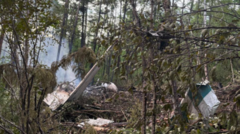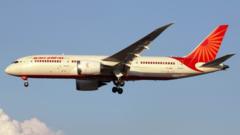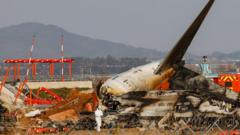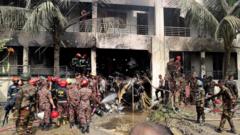A detailed investigation follows the tragic crash of Air India Flight AI171, which claimed 241 lives shortly after takeoff from Ahmedabad. Experts explore various factors such as potential engine failure, bird strikes, and flaps configuration as they seek to uncover the cause of the disaster.
Investigating the Tragic Crash of Air India Flight AI171: Possible Causes Explored

Investigating the Tragic Crash of Air India Flight AI171: Possible Causes Explored
As the world mourns the loss of 241 lives in the Air India Flight AI171 crash, experts delve into potential factors behind the tragedy shortly after takeoff, amidst an ongoing investigation.
The devastating crash of Air India Flight AI171, which took place just after takeoff from Ahmedabad's Sardar Vallabhbhai Patel International Airport, has left the aviation community and the world grappling with questions. This tragic incident, which claimed the lives of all 241 souls on board as well as casualties on the ground, marks a first for the Boeing 787-8 Dreamliner since its entry into commercial service in 2011.
The flight, operated by seasoned pilots Captain Sumeet Sabharwal and co-pilot Clive Kundar, took off at 13:39 local time. However, just moments after becoming airborne, the aircraft reported a mayday call, leaving investigators and experts curious about the circumstances surrounding this urgent alert. Eyewitness reports described a loud bang as the plane struggled to climb, followed by its descent into a densely populated residential area, resulting in widespread devastation.
Footage and preliminary analysis indicate that the aircraft may not have gained adequate altitude, possibly due to factors such as a severe double engine failure or a lack of thrust. Speculation around the rare, yet severe, scenario of a simultaneous failure of both engines has emerged, alongside the possibility of an emergency back-up system not being deployed effectively. The involvement of aviation authorities from India, the US, and the UK marks the beginning of a complex investigation that will examine the flight data and debris.
In this case, the potential for bird strikes, a significant risk factor at Ahmedabad airport, is also being assessed. Data indicates a concerning history of bird-related incidents in the region, which could pose a dangerous threat to aircraft during takeoff. Experts have stated that while bird strikes are concerning, it typically requires a catastrophic event affecting both engines for serious consequences to occur.
The role of the aircraft's flaps, essential for ensuring stable lift during takeoff, is also under scrutiny. There are claims that if the flaps had not been correctly set, this could have hindered the aircraft’s performance, especially given the high temperatures of Ahmedabad at the time of flight. Some pilots argue that any such error would usually trigger an alert system, indicating possible human oversight.
As investigations continue and experts collaborate to piece together the sequence of events leading to this aviation tragedy, the findings of the black box and thorough examinations of the crash site will be pivotal in establishing the exact cause of the incident. The global aviation community watches closely to learn from this harrowing experience.





















